In my new series of articles "Mythical creatures and their origins" I will try to get to the bottom of the actual, preferably scientifically proven origins and to reveal and question the secrets around various mythical creatures that are still present today in literature, film, television and video games and still fascinate humans. In the first part of the series, let's take a closer look at the Lords of the Skies: Dragons. Where did they come from? Why are they so fascinating? Did they perhaps really exist - or could they even still exist today?
I think every fantasy fan knows them: Dragons. Game of Thrones, Tolkien's "The Hobbit", the Nibelungen saga about Siegfried the Dragon Slayer, various myths, legends and fairy tales: Since time immemorial these mysterious mythical creatures have captivated us and inspired our imagination. Over several epochs, the dragon influenced a wide variety of cultures scattered all over the globe, some of which had little or no contact. The fact that even dragon representations in several cultures resemble each other, even though they are native to different continents, still puzzles researchers today. How can this be? After all, is it true that this majestic creature once ruled the skies?
Did dragons really exist? What do we know about their possible origins?
The research for actual facts about dragons was, as expected, not so easy. If you enter the term on Google or YouTube, the flood of search results is stunning, but to filter out mythological or even zoological origins based on scientific knowledge proves to be quite difficult. Some so-called documentaries were rather unsatisfactory because they contained only little new information. Some other documentaries were even more like fantasy movies that were disguised as documentaries, which was quite interesting to watch but not very helpful for my purpose. But I'm a stubborn little nerd who's not afraid of digging deeper. Ok, let's get started and scoop a big ladle of knowledge cream out of the upper layer of the research swamp. Here we go...
The question of whether there were dragons has indeed occupied scientists for a very long time. In the Middle Ages it was even assumed that they must be real animals, which is why dragons were also described in bestiaries, animal books and other scientific works. However, there was no proof for their existence, which is why, over time, strong doubts erose and, with high probability, it was excluded that dragons ever really existed. However, it was still unclear how the myth of the mostly winged, fire-breathing reptiles could develop and last for such a long time.
Some researchers assume that the dragon myth could simply be due to early fossil finds of primeval animals. This could also be proved in parts, because found skeletal remains of cave bears and woolly rhinoceroses are said to have actually influenced individual dragon sagas. So if humans found bones of a T-Rex or pterosaurs like a pteranodon and assumed, due to a lack of scientific knowledge, that this monster still had living relatives and that they could breathe fire, this probably was responsible for various dragon myths and it would explain why many representations of different cultures resemble each other. Dinosaur bones can be found all over the world. And if I imagine such a T-Rex skull, it comes at least very close to the common western dragons, I think.
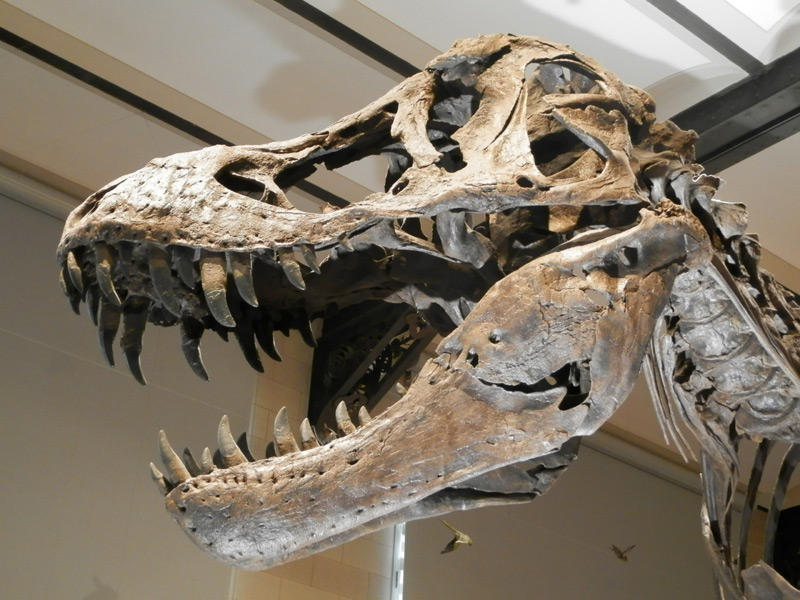
If I continue to imagine that I am a person from the ancient world or even from the Middle Ages, then such a find would certainly make me panic. If you add human fantasy combined with regional superstition to this, you will surely get to dragons, sooner or later. But here is the main crux of the matter: According to the currently prevailing scientific opinion, fossil finds alone are - unfortunately - not sufficient to explain the worldwide spread of the dragon myths. These finds probably exerted an influence on the myths, but without popular belief as a further component that's not enough to explain the myth. And some dragon representations can hardly be traced back to findings of e.g. dinosaur bones, for that too many other animals have entered the mixed creature, which formed the appearance. But more about this later.
Other researchers tried to explain the origin with geological phenomena. There are quite a few rock formations that resemble dragons and could stimulate the human imagination. Walter Hansen, for example, tried this with Germanic mythology in general and was quite successful. His book "Asgard - A Journey into the World of the Germanic Gods" shows in very beautiful photographs and pictorial descriptions how the real existing landscapes, geological phenomena and natural spectacles of Iceland could have influenced and shaped the world of legends of the authors of the Völuspa or Edda (something similar to the Germanic Bible). Highly recommended, if you don't know it yet. And it could have been very similar with dragons - all over the world.
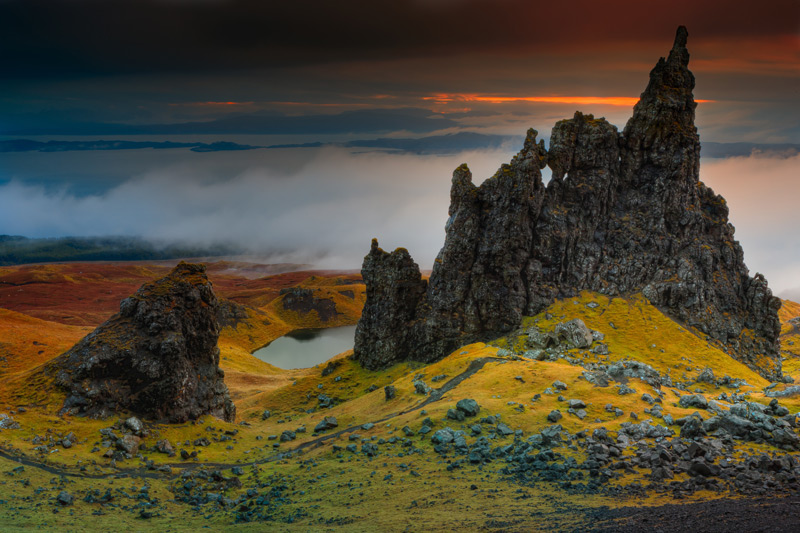
Active, "fire-breathing" volcanoes also existed in many regions of the world and in every era. On the one hand, areas around volcanoes are very fertile and offer many mineral resources such as gold or diamonds, on the other hand a volcanic eruption is a catastrophe with serious consequences. Some researchers suspect that dragons were invented as protection to keep other people away from the rich mineral resources around volcanoes. Perhaps this is why they thought that dragons sat on immeasurable treasures of gold and gems to protect them. Others rather suspect that early nature religions attributed the event of a volcanic eruption, which is known to have devastating consequences and can destroy entire harvests and habitats, to the work of supernatural, divine or demonic powers, such as dragons, due to a lack of understanding of natural phenomena. This is quite possible because early cultures were strongly dependent on the gifts of nature and its benevolence. A being that is able to control such catastrophes is much easier to understand and to appease than the uncontrollable arbitrariness of nature. Both theories could of course have been a kind of birth helper for the dragon myth. And in many cases this will actually be true, because it is relatively plausible, but unfortunately it does by no means explain everything about dragons and their origin. So this is also not the wisdom of last resort and still leaves researchers and scientists with open questions.
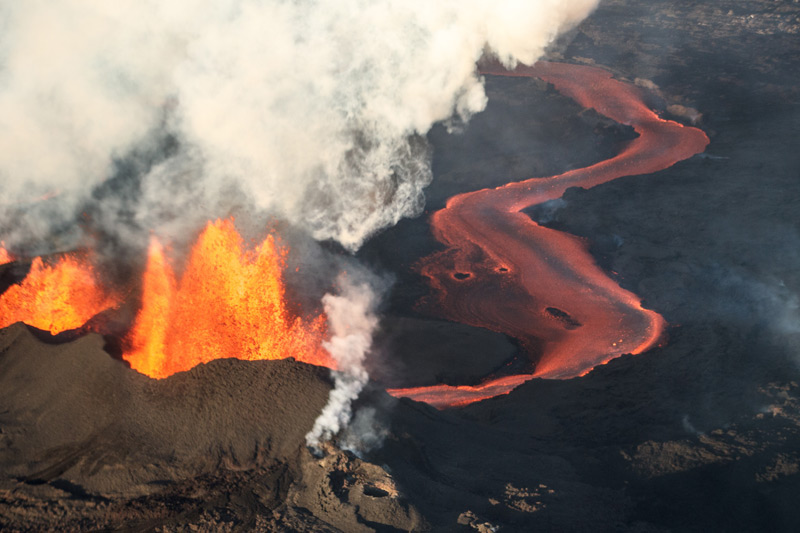
As people moved around the world more and more and developed a strong urge to explore, zoologists found more and more real reptiles or amphibians that bore a strong resemblance to dragons, sparking new theories and speculation. Very good examples of this were found on the Galapagos Islands, among others: The marine and land iguanas. Although these reptiles did not even come close to reaching the size of the mythical creatures or possessing their abilities like flying or spitting fire, it was obviously a beginning. When small reptiles with flying skins, about 20 to 26 cm in size, were found (e.g. Draco volans Linnaeus or the "common flying dragon", 1758), which could not fly themselves but only glide from tree to tree, the thought arose that it might be possible that one day a "real" dragon could be found after all. But how and where?
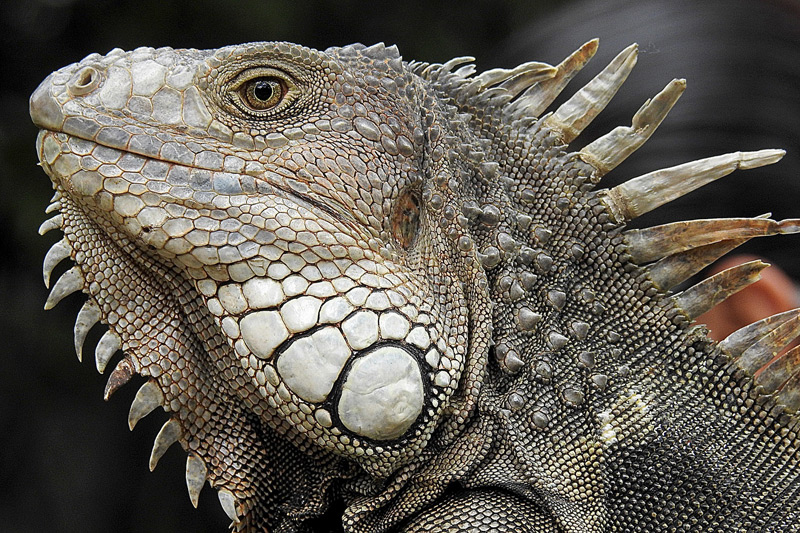
A relatively new and controversial branch of science is trying to bring light into the darkness: Cryptozoology. Until today so-called "cryptozoologists" try to get to the bottom of the question "Did dragons really exist? Now you are probably asking yourselves 'crypto-please what?! Huh?! I never heard that before! What's that supposed to be?" Don't worry, I felt the same way. Cryptozoology is a so far not recognized quasi "subgroup" of zoology and is classified by outsiders as pseudo-science. Nevertheless, it has existed under this term since about 1940 and is concerned with the attempt to prove the existence of animals or creatures for which there are only myths, sagas, legends, eyewitness reports, footprints, etc. They assume that these traditions could possibly have a true core. Roughly speaking, one can say that cryptozoology is subdivided as follows: Drakology (dragons), dracontology (sea monsters), hominology (e.g. yetis and everything ape-like) and mythological cryptozoology (history of the origin of mythical creatures). Yes, you have read correctly: There is a special subgroup of cryptozoology that explicitly deals with dragons. Why there are two terms for it, which ultimately mean the same thing, but each of them focuses on slightly different creatures, I unfortunately couldn't find out. But drakology is then probably the (pseudo) science of dragons. The "dracologists" probably proceed like detectives and sift through mythological records found by archaeologists, paleontological finds and perhaps also possible eyewitness reports or sightings in modern times and check the material for authenticity, similarities, clues to possible, new findings etc. They also search for possible "descendants" of the dragons, for still unknown reptile species all over the world. So the famous search for the needle in the haystack, I would guess. Certainly very exciting, but also very frustrating, because with high probability every trace (at least so far) led into a dead end.
Some of these cryptozoologists have nevertheless developed theories on the origin of dragons. Some probably assume that dragons lived together with dinosaurs or could be their direct descendants. Thus they would be real existing prehistoric beings. It is possible that these prehistoric animals survived the meteorite impact similar to crocodiles and other animals from prehistoric times and lived together with humans at least for a while, which could have led to the development of myths and legends. The boldest speculations do not exclude the possibility that some specimens could still be alive today and that we have not yet sighted any of them only because these regions of the earth are still unexplored and therefore they live in secret. So to speak, as in Arthur Conan Doyle's work "Lost World" or similar. Well. Until now these theories have not yet left the stage of speculation and conjecture. And even if from time to time, very similar to UFOs, alleged sightings with blurred moving image material fuel the hope to finally find a living specimen of a dragon, tangible evidence remains scarce. Even fossils of actual dragons could not yet be found. Therefore there is still no serious and scientifically verifiable evidence for the actual existence of dragons, as we imagine them from myths and legends - neither as extinct primeval animals, nor as hidden survivors from prehistoric times. But who knows: Maybe one day someone will find this "forgotten world" and show science the finger. Because everything is possible, nothing is excluded. Let us simply be surprised...
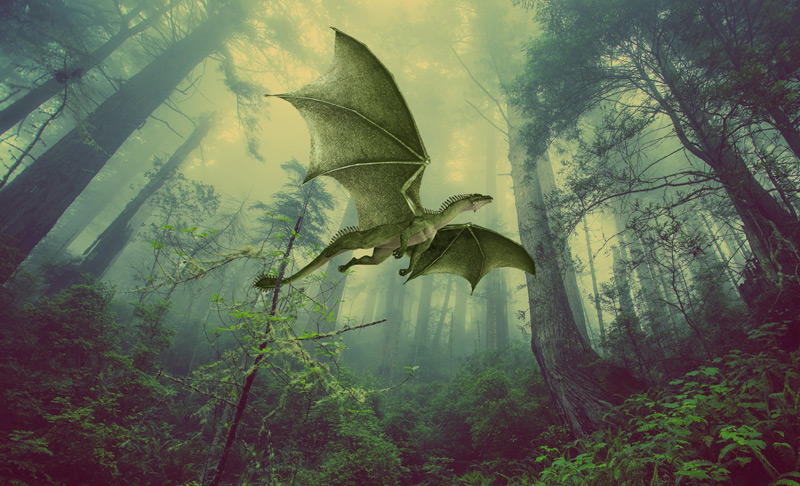
What do we really know about dragons? What myths and legends are there?
These are good questions. But let's start small at first and increase slowly - but I warn you, this section is a bit more extensive. I won't include everything I could research in the article, because that would simply go beyond the scope of the article. The post has already become very long and I don't want to write a book, but "only" a simple blog post. So forgive me if I left out what you think is an important and interesting mythology about dragons. So you have been warned. All right, let's get started.
The term "dragon" originally comes from the ancient Greek (δράκων drakōn, literally translated "the staring one") and was used at that time to describe non-toxic snake species. Dragons as a mythological mythological figure or religious metaphor for evil or divine were worshipped or feared in many different cultures all over the world, depending on the meaning of the dragons for the respective people. Every culture has its own ideas about this, even if many of them are similar. Besides the western representations known to us, there are also oriental, Asian and American representations. With "American" some cultures are summarized: e.g. Aztecs, Toltecs, Maya. All in all, we can assume that there are 23 different ethnic groups, which had dragon myths or legends integrated in their folk beliefs.
The oldest dragon representation in our latitudes in Europe (not generally, because there are much older ones) is certainly the Midgard Serpent or also Old Norse Jörmungandr from Germanic mythology, although it is less a dragon than a sea monster. It is also called "World Serpent" because, similar to the alchemical dragon representation of Ouroboro, it bites its own tail and thus forms a circle. Legend has it that if it ever let go of its tail, the Twilight of the Gods or the World Fire - also known as Ragnarök - would ignite, which would mean the end of the world. Another, probably better known dragon figure from European legends is the dragon from the Nibelungen saga, which is probably Fafnir or also Fafner and originally comes from the Nordic Völsunga saga. He depicts the typical dragon sitting on a lush treasure of gold, which was slain by a brave and absolutely selfless (haha) hero - Siegfried. This depiction of a hero slaying the evil dragon runs through many myths, legends, sagas and fairy tales - not only in Nordic pagan or later Christian traditions, but also all over the world and through many epochs. However, especially in the western myths and legends dragons were usually rather negatively occupied and demonized. Brave knights set out to make a name for themselves as dragon slayers. Some of them were later venerated by the Christian church as saints, such as St. George.
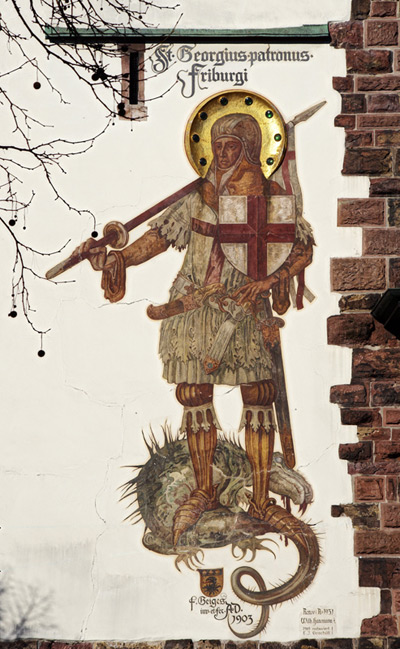
In other ethnic groups, the fight with the dragon is more likely to be portrayed as part of the story of creation. In the Babylonian religion, for example, the fight between Marduk and the goddess Tiamat, who is depicted as a horned serpent, ultimately led to the creation of heaven and earth. In other creation myths, in which a dragon assumes the role of the overpowering antagonist, its death causes the land to become fertile and habitable for humans.
Since the plot elements around the dragon tales are similar to those of many of these ethnic groups, especially with regard to the aforementioned dragon fight, science assumes a common origin. The so-called "Finnish School" claims to have found this origin in Southern Africa after having carried out a so-called phylogenetic reconstruction (a method from evolutionary biology for determining descent and relationships) of a total of 69 dragon motifs from all 23 different ethnic groups. According to this, the myth is said to have spread all over the world by migrations starting from the south of Africa. The Indologist Michael Witzel sees proof for this thesis in the fact that the dragon ideas, e.g. concerning dragon slayers, also exist in Polynesia and Hawaii, although there are no large reptiles there. I don't know why this should be a proof, because in Germany there are also legends about dragon slayers (e.g. St. George), although there are no large reptiles there either - or did I miss something here? Also, at least I don't know how the myth could be passed on across oceans in such early times, when shipping was not yet designed for such long distances, according to the current state of knowledge of science. Unless the myth is actually as old as mankind itself and simply migrated with it when the continents were still lying together - out of the cradle of mankind (i.e. Africa) into the world. Whereby that with the original "cradle of mankind" seems to be outdated again, because in 2017 apparently teeth of primitive humans were found in Rheinhessen, i.e. Mainz, which are said to be approx. 9.7 million years old and thus a good 4 to 5 million years older than the finds from Africa.
What is certain, however, is that the first dragon representation known to us is not to be found on the African continent, but on the Asian one, namely China. The first representations go back to the Shang Dynasty (15th to 11th century BC) and initially only symbolized royal power. It should be noted that Chinese emperors often considered themselves to be descendants of the dragons and according to tradition, half of the original emperors and half of the original empresses are said to have come from the dragon dynasty. So China has always had a very special relationship with dragons, which is probably unique in the world. The most famous and probably most important Chinese dragon is Long or Lung. He is a mixed creature, which is said to consist of 9 different animals:
- Horns of a deer
- Head of a camel
- Ears of an ox
- Eyes of a demon or a devil
- Neck of a snake
- Abdomen of a clam
- Scales of a carp
- Claws of an eagle
- Soles of a tiger.

The dragon Long is said to have the power over the weather and determines the seasons and the harvest. According to this, he directly had the life of the people in his claws. But fortunately he is mostly described as peaceful and well-disposed towards people, but can also become very angry, which then leads to natural disasters and drought. In general, the Chinese dragon stands above all for luck, goodness and intelligence. One of the most important festivals in China is the dragon boat race, which has been held for over 2,000 years and among other things is also to appease the dragon.
The first known mention of a dragon on the African continent, which seems to be the origin of all dragon myths, at least from its south, was at the end of the 4th millennium B.C. in the Uruk period, a prehistoric epoch in Mesopotamia (Near East) in written form in temple records. A little later then, about 3.000 B.C., also on roll seals in pictorial form. In terms of contemporary history, this epoch of the Uruk period is between the Copper Stone Age (Chalcolithic) and the Early Bronze Age. That is therefore already really, really long ago.
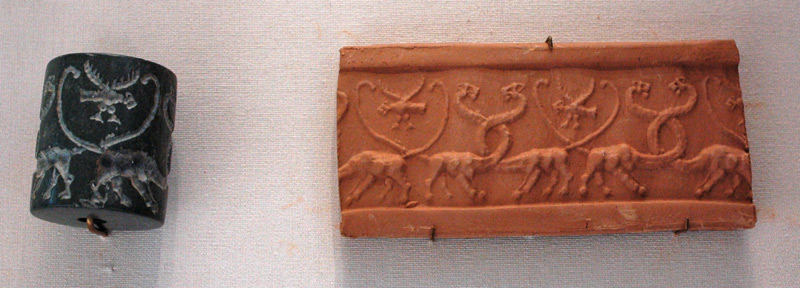
What you can see on the roll seal has little to do with the dragons we know, but there are actually two different dragons to be seen: Lion dragons (a mixture of lion and bird) and snake dragons. I personally think that these dragons might have some similarities to a brontosaurus and an archaeopteryx. But this is just my personal, unscientific view of things. Anyway, the dragons from the Uruk period are supernatural mixed creatures, which are neither gods nor demons and were at least partly seen as protectors. This is what distinguishes them at least from most of the dragon conceptions of the West.
As already mentioned, dragons are by no means demonized and feared in every culture: In some cultures, the dragon figure is also worshipped as a god, for example. A good example is Kukulkan, the feathered snake. It was worshipped by the Maya as the god of resurrection and reincarnation. He is also a god of the four elements (water, earth, fire, air), whereby each element stands for an animal or plant in the Maya: air - the vulture, fire - the lizard, earth - the corn, water - the fish. This feathered snake also appeared previously in Toltec and Aztec myths as Quetzalcoatl, after which the largest pterosaurus known to us to date is named: the Quetzalcoatlus with an impressive wingspan of 11 to 13 m. A special feature of the Quetzalcoatl compared to other dragon myths is that it is also depicted in human form in Aztec codices as a bearded, fair-skinned man in an abstract-human way. Unfortunately I could not find any reliable source for dating the origin of this dragon myth. The codices, for example, all seem to have originated after the Spanish conquest in the 16th century, whereas several pyramids and other buildings can be dated much earlier. The representation of the Quetzalcoatl as a feathered snake is very similar to Asian dragon representations e.g. the Chinese dragon "Long". Why this is so, is not clarified until today. But there are researchers who see in it a proof that there were probably already earlier transpacific relations between America and Asia or China. However, there is no evidence for this. Or perhaps it is also a further "proof" for the theory of the tradition by early migration of peoples...?
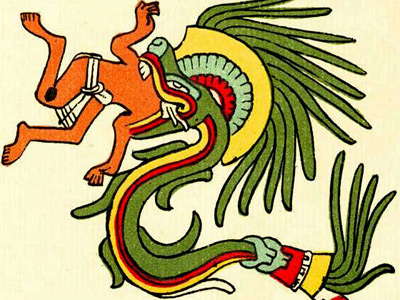
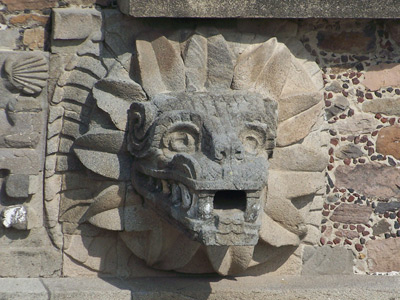
At the end of this very long section, a small architectural excursion, which also has a connection to dragons: A very impressive Mayan building dedicated to the god Kukulcan. It is located on the Yucatan peninsula (Mexico), is estimated to be between 660 and 1,050 AD, is 30 m high and has a total of 365 steps. We are talking about the pyramid of Kukulcan. I chose this building for the article because I am very impressed by its architectural achievement. Not only that every year at the same time, namely the equinox (March 21 and September 21), the shadow of the pyramid edges on the north side looks as if a snake is meandering up or down the pyramid steps, no, also various acoustic phenomena, which were used for the worship of holy animals and elements, could be marvelled at here. Thus the call of a Quetzal bird can be heard, if you clap your hands in front of the steps. If you clap your hands in the middle of the ball playground, the echo sounds like the roar of a jaguar. Steps of a person at the top of the stairs sound like falling raindrops to people still at the bottom of the stairs. So I was fascinated by this attention to detail and this incredible performance, I hope you feel the same.
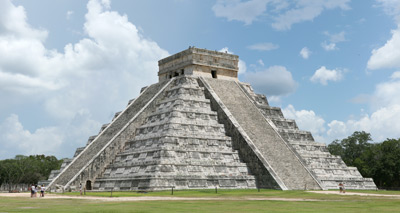
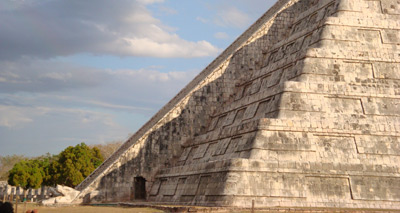
Related literature and information on the topic Dragons
Here I list some books, which on the one hand shed light on the mythological background and on the other hand show interesting illustrations of dragons, which are a kind of dragon study. Some of them are more or less scientific treatises which deal with the mythological figures and their possible origin. I try to list mainly German literature here, because I can judge their content best. It is very likely that most of the German-language works listed here are also available in English.
Note: The Amazon links are not affiliate links or anything like that (so I don't earn anything from them or anything like that) and only serve to make your search for the book as easy as possible.
- Unicorn, phoenix, dragon: where do our mythical animals come from
in German, by Josef H. Reichholf (Author) - Amazon DE - Lexicon of animal symbolism: mythology, religion, psychology
in German, by Clemens Zerling (Author) - Amazon DE - Atlas of mythical creatures: sagas, legends, myths from all over the world
German-speaking, illustrated, by Sandra Lawrence (author), Stuart Hill (author, illustrator) - Amazon DE - Bestiary: the animal in medieval manuscripts
in German, illustrated, by Christian Heck (author), Rémy Cordonnier (author) - Amazon DE - About dragons, yetis and vampires. On the trail of mythical animals.
German-speaking, by Harald Gebhardt (author), Mario Ludwig (author) - Amazon DE - Rosen, B: Mythical Creatures Bible: The Definitive Guide to Legendary Beings
in English, illustrated, by Brenda Rosen (author) - Amazon DE - Dracopedia Field Guide: Dragons of the World from Amphipteridae through Wyvernae
in English, illustrated, by William O'Connor (Author) - Amazon DE
Here are some interesting drawing instructions by William O'Connor for (aspiring) fantasy illustrators (all English and logically illustrated)
- Dracopedia The Bestiary: An Artist's Guide to Creating Mythical Creatures - Amazon DE
- Dracopedia: A Guide to Drawing the Dragons of the World - Amazon DE
- Dracopedia Legends: An Artist's Guide to Drawing Dragons of Folklore - Amazon DE
- Dracopedia The Great Dragons: An Artist's Field Guide and Drawing - Amazon DE
Fantasy literature for dragon fans, which you (in my opinion) should know or which I simply find recommendable, among them novels and comics or graphic novels (all in German language, order does not show a rating)
- The Hobbit
Roman, by J.R.R. Tolkien (Author) - Amazon DE - The Legacy of the Dragon Riders: Eragon
Roman, by Christopher Paolini (Author) and Joannis Stefanidis (Author) - Amazon DE - Lady Trent's Memoir 1: The Natural History of Dragons
Roman, by Marie Brennan (author) - Amazon DE - game of Thrones
by George R.R. Martin (Author) - Amazon DE - Fire and Blood - Book First: The Rise and Fall of the House of Targaryen of Westeros
by George R.R. Martin (Author) - Amazon DE - Myre - The Chronicles of Yria
Comic, by Claudya Schmidt (Author & Illustrator), Davis Matt (Author) - Amazon DE - The legend of the dragon knight
Comic, by Ange (Author), Roberto Viacava (Illustrator) - Amazon DE - I, the dragon
Comic, by Juan Gimenez (Author) - Amazon UK - Dragon dynasty
Comic, by Emmanuel Civiello (Author), Hélène Herbeau (Author) - Amazon UK
German-language documentation, some of which were also used as sources for the article
- https://www1.wdr.de/mediathek/video/sendung/planet-schule/video-drachen-die-entstehung-von-smaug-100.html
- https://www1.wdr.de/mediathek/video/sendung/planet-schule/video-drachen-chinesische-legend-100.html
- https://www1.wdr.de/mediathek/video/sendung/planet-schule/video-drachen-goetterdaemmerung-100.html
- https://www.zdf.de/dokumentation/terra-x/monster-und-mythen-100.html
- https://www.zdf.de/dokumentation/terra-x/interview-simek-scheid-100.html
German-language sources for the article and further information on dragons, which are available free of charge on the Internet
- https://de.wikipedia.org/wiki/Drache_(Mythologie)
- https://de.wikipedia.org/wiki/Uruk-Zeit
- https://de.wikipedia.org/wiki/Pyramide_des_Kukulc%C3%A1n
- https://de.wikipedia.org/wiki/Kukulkan
- https://de.wikipedia.org/wiki/Quetzalcoatl
- https://de.wikipedia.org/wiki/Quetzalcoatlus
- https://de.wikipedia.org/wiki/Tiamat
- https://de.wikipedia.org/wiki/Fafnir
- https://de.wikipedia.org/wiki/Midgardschlange
- https://de.wikipedia.org/wiki/Siegfried_der_Drachent%C3%B6ter
- https://de.wikipedia.org/wiki/Nibelungenlied
- https://de.wikipedia.org/wiki/Flugdrachen
- https://de.m.wikipedia.org/wiki/Kryptozoologie
- http://www.nibelungenlied-gesellschaft.de/03_beitrag/eichfelder/eichf_fs1.html
- https://drachen.fandom.com/de/wiki/Drakologie
- https://drachen.fandom.com/de/wiki/L%C3%B3ng_(Chinesischer_Drache)
- https://drachen.fandom.com/de/wiki/Ry%C5%AB_(Japanischer_Drache)
- https://drachen.fandom.com/de/wiki/%C3%96stliche_Drachen
- https://drachen.fandom.com/de/wiki/Lindwurm
- https://drachen.fandom.com/de/wiki/Fafnir
- https://drachen.fandom.com/de/wiki/Jormungand
- https://www.planet-wissen.de/kultur/fabelwesen/drachen/index.html
- https://www.planet-wissen.de/kultur/fabelwesen/drachen/pwiewissensfrage318.html
- https://www.planet-wissen.de/kultur/fabelwesen/drachen/pwiederchinesischedrache100.html
- https://www.mandalingua.com/de/china-guide/chinesische-kultur/chinas-traditionelle-feste/das-drachenbootfest-in-china/
Image credits and sources in the order of use in the article
- cover photo
© Josch13 on Pixabay - Head of a Tyrannosaurus Rex skeleton
© 2853469 on Pixabay - Example of a dragon-like rock formation - photographed in Scotland
© Frank Winkler on Pixabay - Volcanic eruption: fire-breathing volcano and flowing lava
© jmarti20 on Pixabay - Portrait of an iguana
© skeeze on Pixabay - Fantasy representation of a dragon in a jungle
© Artie_Navarre on Pixabay - Saint George, wall painting at the Schwabentor, Freiburg, Fritz Geiges
© joergens.mi / CC BY-SA (https://creativecommons.org/licenses/by-sa/3.0)
Image source: https://commons.wikimedia.org/wiki/File:St._Georg_Schwabenthor_(Freiburg)_3266.jpg - Depiction of the dragon Long
© Armaan Ismail on Pixabay - Snake dragons and lion dragons on a Sumerian cylinder seal (Uruk period around 3000 BC) Chr.)
© Louvre Museum / Public domain
Image source: https://commons.wikimedia.org/wiki/File:Cylinder_seal_lions_Louvre_MNB1167.jpg - Quetzalcoatl as a feathered snake in Codex Telleriano-Remensis
© Unknown author / Public domain
Image source: https://commons.wikimedia.org/wiki/File:Quetzalcoatl_telleriano.jpg - Teotihuacán - head of the feather snake
© Jami Dwyer / CC BY-SA (https://creativecommons.org/licenses/by-sa/2.0)
Image source: https://commons.wikimedia.org/wiki/File:Teotihuacan_Feathered_Serpent_(Jami_Dwyer).jpg - Pyramid of Kukulcan
© Daniel Schwen / CC BY-SA (https://creativecommons.org/licenses/by-sa/4.0)
Image source: https://commons.wikimedia.org/wiki/File:Chichen_Itza_3.jpg - Descending line on Dec. March 2009 the pyramid of Kukulcan
© ATSZ56 / Public domain
Image source: https://commons.wikimedia.org/wiki/File:ChichenItzaEquinox.jpg

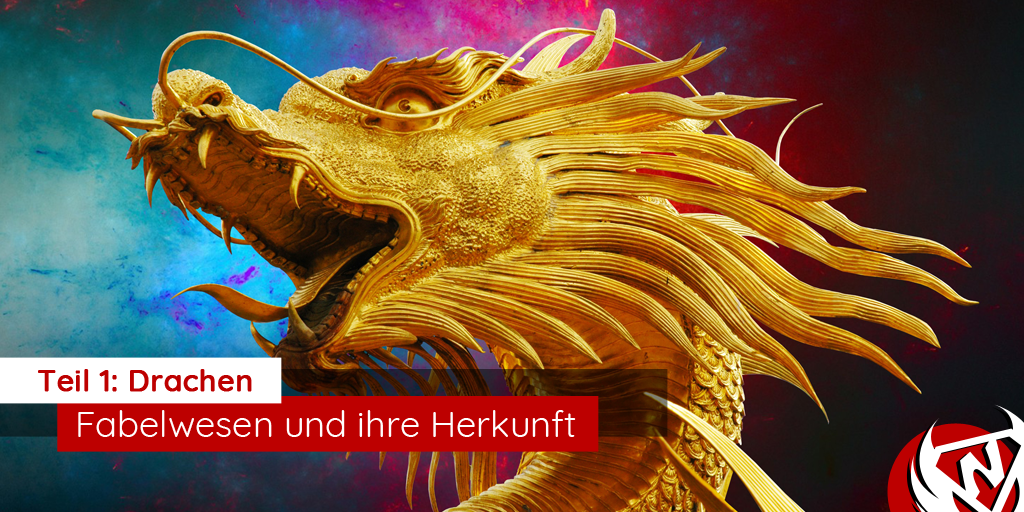
 Roboter: © Designed by freepik.com
Roboter: © Designed by freepik.com